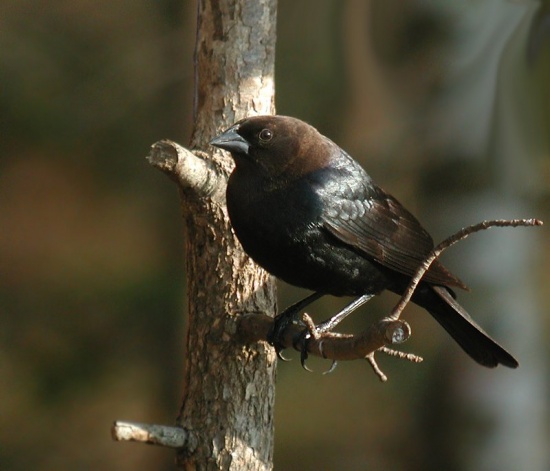- Molothrus ater
Identification
6-8" (15-20 cm).
- Finch-like bill
Male
- Black
- Glossy brown head
Female
Plain gray brown
Distribution
Breeds from British Columbia, central Saskatchewan, central Ontario, Quebec, and Newfoundland southward throughout United States except extreme Southeast and Florida. Winters in central and southern part of breeding range as well as in Florida.
Habitat
Agricultural land, fields, woodland edges, and suburban areas.
Behavior
Nesting
4 or 5 white eggs, lightly speckled with brown, laid one at a time in the nests of other songbirds.
Voice
Song
A liquid, bubbly gurgle followed by an upslurred, high-pitched whistle (given during display).
Call
check or a rattle.
Discussion
Cowbirds are brood parasites and promiscuous; no pair bond exists. In late spring the female cowbird and several suitors move into the woods. The males sit upright on treetops, uttering sharp whistles, while the female searches for nests in which to lay her eggs. Upon choosing a nest, she removes one egg of the host's clutch, and deposits one of her own in its place.
Unlike parasitic Old World cuckoos, which lay eggs closely resembling those of a host species, cowbirds lay eggs in the nests of more than 200 other species, most smaller than themselves. Some host species eject the unwanted egg, others lay down a new nest lining over it, but most rear the young cowbird as one of their own. The young cowbird grows quickly at the expense of the young of the host, pushing them out of the nest or taking most of the food.




